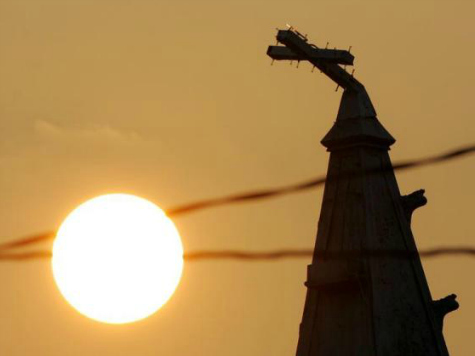Atheists and others are practically giddy at a new data analysis that shows a correlation between an increase in Internet use and a decrease in religious affiliation.
Writing at Salon.com, frequent critic of religion, Amanda Marcotte, celebrates the new data. She writes, “The Internet is uniquely positioned as the perfect tool for sharing arguments against religion with believers who are experiencing doubts. It’s searchable, it allows back-and-forth debate, and it makes proving your arguments through links much easier. Above all else, it’s private.”
Marcotte points to Professor Allen Downey of the Olin College of Engineering in Massachusetts who looked at data collected from the General Social Survey, an ongoing massive collection of national and international data carried out at the University of Chicago.
According to the survey, from 1990 to 2010, the percentage of people without religious affiliation increased from 8% to 18%. Protestants dropped from 62% to 51%. The percentage of Catholics and Jews was mostly unchanged.
Downey says it is because of the rise of the Internet and increased college graduation rates.
According to his data analysis, “The fraction of people in the U.S. with no religious affiliation was 7.1% in the 1980s, 10.2% in the 1990s, and 15.3% in the 2000s. The difference between the 1980s and the 2000s is 8.2 percentage points, or 25 million people in the 2010 population.”
Downey finds that “the factor with the strongest effect on religious affiliation is religious upbringing,” but that the percentage of those being brought up that way is shrinking. He found that “college education decreases the chance of religious affiliation, and the prevalence of college education is increasing.”
But, it is the Internet that seems to have the most profound effect. In 1980, the percentage of Americans using the Internet was zero. By 2010, 53% used the Internet at least two hours a day, while 25% used it more than seven hours a day.
Anticipating pushback, Downey says, “Someone who has taken an introductory statistics class might insist that correlation does not imply causation. …Nevertheless, correlation does provide evidence in favor of causation.”
This drop in religious affiliation has been the cause of great debate and intense study and speculation.
In her book How the West Really Lost God, scholar Mary Eberstadt postulates that family disintegration preceded a drop in religious identification, that religion is born from an intact religious family and lost as families splinter.
In his book An Anxious Age, Catholic thinker Joseph Bottum places the cause on the theological drift through liberalism into a general kind of do-goodism that occurred in the mainstream Protestant denominations beginning in the early 20th century.
Marcotte points out that Mormons seem to be having the hardest time since a veritable cottage industry has sprung up on the Internet of disaffected Mormons who are pointing out historical problems with many Mormon claims.
The big Mormon news recently is the admission that Mormon founder Joseph Smith had 40 wives, including one who was 14 years old. This landed on the front page of the The New York Times, but it was probably precipitated by online critics, like the blog Mormon Coffee (It’s forbidden, but it’s good!), that have spoken openly about Mormon claims.
The LDS Church has started releasing essays explaining hitherto touchy topics, such as the former prohibition of blacks into the faith, polygamy, and more.

COMMENTS
Please let us know if you're having issues with commenting.